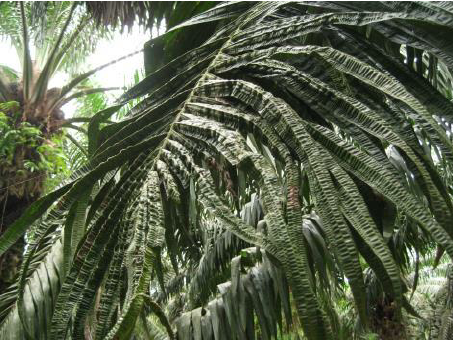Boron is a micronutrient that is essential for the growth and development of oil palm trees. It plays a vital role in various physiological processes, including cell wall formation, membrane stability, sugar transport, and reproduction. Here are some of the important roles of boron in oil palm cultivation:
Fruit yield and quality: Boron is necessary for the development and maturation of oil palm fruits. It helps to improve fruit yield and quality by increasing fruit weight, oil content, and reducing the number of empty fruit bunches.
Flowering and pollination: Boron is essential for flowering and pollination in oil palm trees. It helps to improve the synchrony of flowering, which is critical for optimal pollination and fruit set.
Root development: Boron plays a vital role in root development and function in oil palm trees. It helps to improve root growth, which is important for nutrient and water uptake from the soil.
Resistance to diseases and pests: Boron helps to improve the resistance of oil palm trees to diseases and pests. It enhances the plant's natural defense mechanisms, making it less susceptible to attack by pathogens and insects.
Nutrient uptake and utilization: Boron helps to improve the uptake and utilization of other essential nutrients, such as nitrogen, phosphorus, and potassium, in oil palm trees. This leads to improved plant growth and productivity.
However, when oil palm trees do not have enough boron, they can exhibit various symptoms of nutrient deficiency. Boron deficiency is a significant threat to oil palm plantation productivity and yield. Below are some of the common signs of boron deficiency in oil palm trees:
Nutrient uptake and utilization: Boron helps to improve the uptake and utilization of other essential nutrients, such as nitrogen, phosphorus, and potassium, in oil palm trees. This leads to improved plant growth and productivity.
However, when oil palm trees do not have enough boron, they can exhibit various symptoms of nutrient deficiency. Boron deficiency is a significant threat to oil palm plantation productivity and yield. Below are some of the common signs of boron deficiency in oil palm trees:

Stunted growth: One of the most noticeable signs of boron deficiency in oil palm trees is stunted growth. The trees may appear smaller than usual and have shorter leaves and branches.
Leaf distortion: Another sign of boron deficiency is leaf distortion. The leaves of the oil palm trees may become twisted or cupped, and the margins may appear irregular.
Fruit abnormalities: Boron deficiency can lead to abnormalities in oil palm fruit. The fruit may be smaller in size, have a lower oil content, and have a higher percentage of empty fruit bunches.
Root abnormalities: Boron deficiency can also affect the root system of oil palm trees. The roots may become thin and brittle, making it difficult for the trees to absorb nutrients and water from the soil.
Flowering problems: Boron deficiency can lead to problems with flowering and pollination in oil palm trees. The flowers may not develop properly, and the synchrony of flowering may be affected.
It is important for oil palm growers to identify and address boron deficiency promptly to prevent further damage to the trees and ensure optimal growth and productivity. Applying boron fertilizers, both in the soil and as foliar applications, is an effective way to address boron deficiency in oil palm trees. Regular soil testing can also help growers to monitor the nutrient status of their soil and adjust their fertilization practices accordingly. While boron is only required in small amounts, it plays a crucial role in oil palm growth and development. Therefore, it is essential for oil palm growers to prioritize boron application to ensure healthy and productive trees. By addressing boron deficiency promptly, oil palm growers can improve the quality and yield of their crops, contributing to sustainable vegetable oil production.
It is important for oil palm growers to identify and address boron deficiency promptly to prevent further damage to the trees and ensure optimal growth and productivity. Applying boron fertilizers, both in the soil and as foliar applications, is an effective way to address boron deficiency in oil palm trees. Regular soil testing can also help growers to monitor the nutrient status of their soil and adjust their fertilization practices accordingly. While boron is only required in small amounts, it plays a crucial role in oil palm growth and development. Therefore, it is essential for oil palm growers to prioritize boron application to ensure healthy and productive trees. By addressing boron deficiency promptly, oil palm growers can improve the quality and yield of their crops, contributing to sustainable vegetable oil production.

